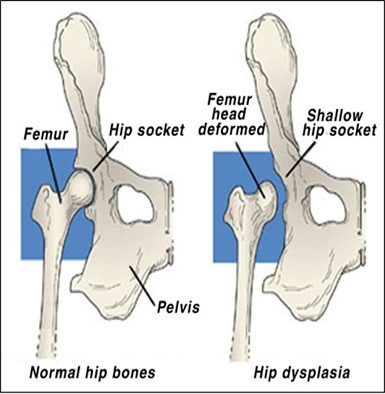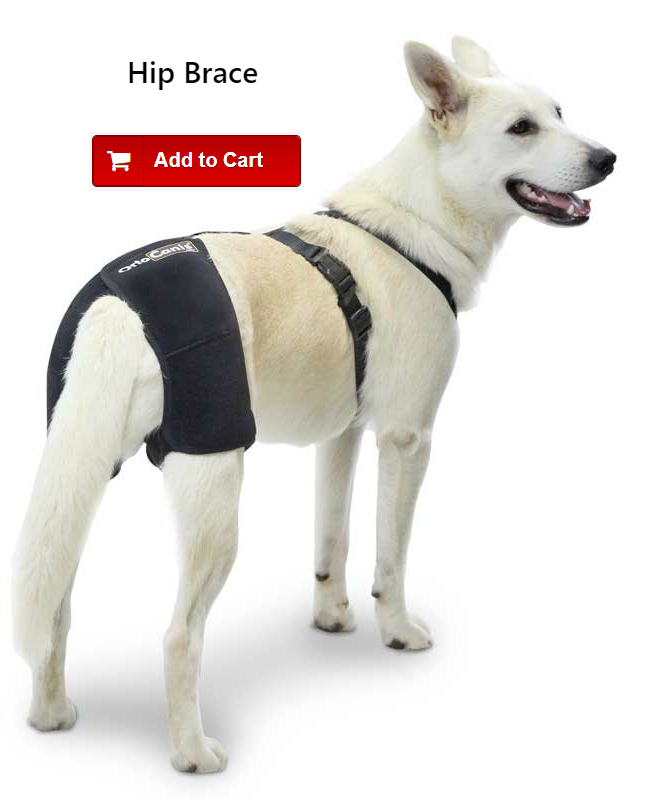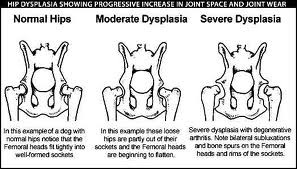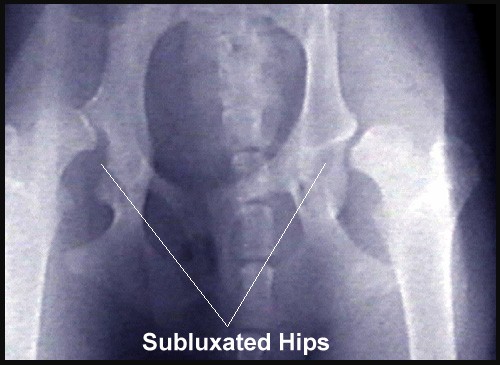Hip dysplasia is a disease that mainly affects bigger dogs or those of rapid growth.
The disease causes pain and often a puppy will stop running and jumping due to not being able to stand up or walk short distances.
The disease has a marked genetic basis, so despite there being no cure, and although doing this will not help to improve the symptoms, it is recommended that you spay or neuter these animals as to avoid this trait being reproduced, even by mistake!
Dogs with greater genetic predisposition are the St. Bernard and Bull Dogs, and then the German Shepard, Labrador, Rottweiler, Mastiffs and Golden Retriever, along with other large dogs.

A few tips to ensure that our dog is okay, especially if we have a breed that is more predisposed, include veterinary checks at 3, 6 and 10 or 12 months, maintaining the animal at an appropriate weight, continued physical activity but not overly intense or high impact and a balanced diet adjusted to their age.
With an X-ray similar to that of the picture, hip dysplasia can be identified before the dog is even 12 months old. We can observe in the image how the femoral head does not fit into the acetabulum as explained in the diagram, where we can see the femoral head deformed and out of its natural place (the first image of the diagram shows a normal hip.
What exactly happens? Where does the problem lie?
Rapidly growing dogs do not have the time to strengthen their joints and bones to support the body’s weight, the joints become deformed or they do not form properly and the acetabulum, which is the concave part where the femoral head should go, does not fully cover it .
.
The “gear” malfunctions, there is not good coherency between the acetabulum and the femoral head, which causes instability and more tension than normal in the joint capsule. The capsule becomes inflamed and hurts and in time the joint (due to its instability and lack of coherency) degenerates and osteoarthritis occurs. An x-ray is always needed to make the diagnosis, given that occasionally it does not become problematic until it is already too late.
It is because of this that sometimes the problem is not detected until adulthood, or even sometimes old age, when the osteoarthritis has already set in and the hip begins to hurt. Too often it is already too late to solve the problem and we must look for palliative solutions: anti-inflammatories, physical therapy, hip supports, rear support harnesses, chondroprotectors, or wheelchairs for severe cases.
 There are different degrees of hip dysplasia depending on the degree of joint subluxation that the hip joint presents.
There are different degrees of hip dysplasia depending on the degree of joint subluxation that the hip joint presents.
In severe dysplasia more than 50% of the femoral head is out of the acetabulum.
Ortocanis.com
Thank you for trusting the first portal for canine rehabilitation and orthopedics.


